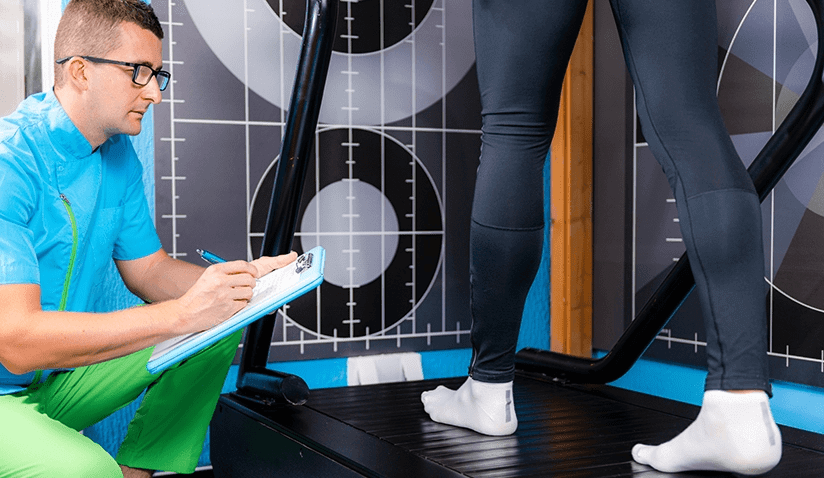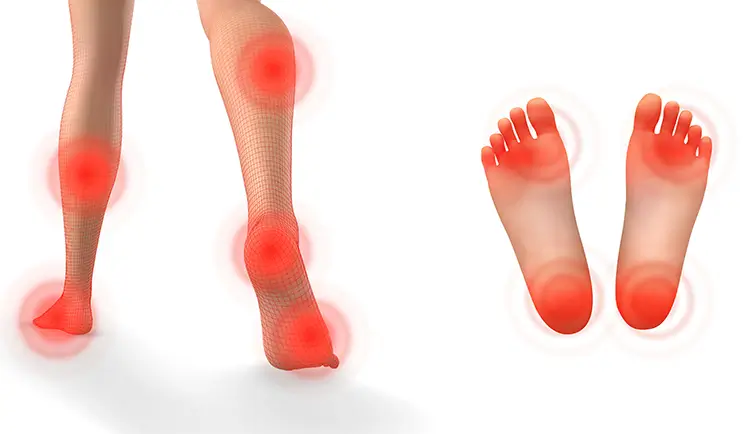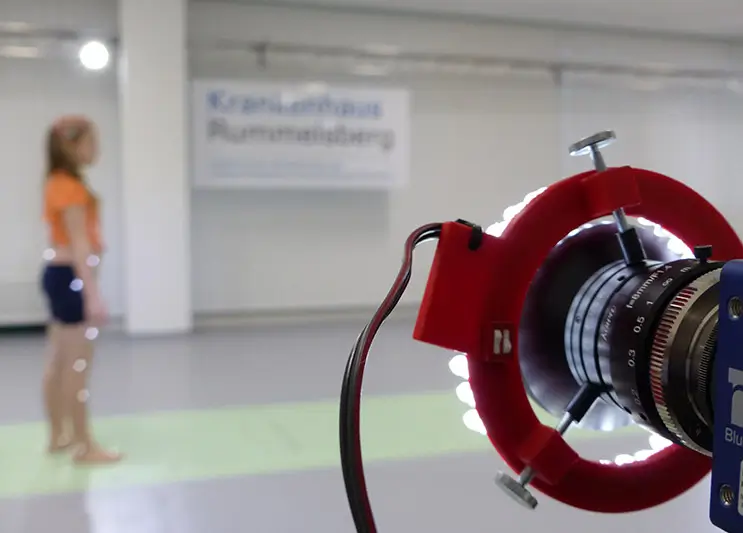3D Gait Analysis – Revolutionizing Cerebral Palsy Treatment for Children

What is the purpose 3D Gait Analysis?
How Can 3D Gait Analysis Help in Cerebral Palsy?
Cerebral Palsy is one of the most common neurological disorders in children. It affects the way a child moves, walks (abnormal gait), and performs their daily activities. In Germany, the incidence of Cerebral Palsy is estimated at 1 in every 500 children.
The treatment and diagnosis of cerebral palsy have seen stellar advancement in the last few years. One of the most innovative diagnostic tools neuro-orthopedists now have is the 3D gait analysis.
3D gait analysis for cerebral palsy has revolutionized the diagnosis and treatment of motor disorders associated with Cerebral Palsy. It uses high-tech sensors and cameras to “measure” how a child walks. It records every biomechanical detail that can be missed by the human eye. 3D gait analysis helps surgeons know exactly where the problem is, and how it could be treated.
Since 3D gait analysis is still a fairly new technology in cerebral palsy treatment, it is still not widely available. Nonetheless, a few top global centers utilize 3D gait analysis for cerebral palsy assessment to customize the treatment to every individual child’s needs.
What is 3D Gait Analysis?
3D gait analysis is an innovative diagnostic tool used to assess motor disabilities in different musculoskeletal and neuromuscular disorders. It falls under the field of movement analysis.
What is the purpose 3D Gait Analysis?
It measures different biomechanical variables to identify pathologic walking patterns (gait) and accurately detect movement disorders.
Data is gathered using highly sensitive 3-dimensional cameras, motion sensors, and force sensors (fixed in the ground). Numerous variables are measured and analyzed in the system’s computer. A 3-dimensional model of the patient’s moving body is recreated, allowing doctors to thoroughly assess the present disability.
Based on the gathered gait assessment data and the 3D model, doctors can now diagnose and assess cerebral palsy motor disorders more efficiently. The detailed results provided by 3D gait analysis help determine which surgery is needed and can prevent overcorrection in many cases.

How Can 3D Gait Analysis Help in Cerebral Palsy?
Cerebral palsy is a very heterogeneous disease. Each patient is unique. The affected muscle groups, the severity of spasticity, and the gait abnormality differ from one patient to another.
3D gait analysis provides deep and highly detailed insight into the biomechanics of the body. It records numerous variables and re-constructs the patient’s walking motion in 3 dimensions. This allows doctors to know exactly where the problem is, down to each affected muscle.
In child cerebral palsy, 3D gait analysis can help with the following.
Deciding the Right Treatment
Treatment of cerebral palsy can include physical therapy, orthotics, walking aids, or surgery. But since every Cerebral Palsy patient has a unique combination of motor disorders, it’s sometimes very hard to identify where the real problem lies.
3D gait analysis helps guide doctors’ treatment choices. It helps decide whether orthotics alone are enough or cerebral palsy surgery is needed. It also helps determine what kind of cerebral palsy surgery should be attempted.
Predict Outcomes
Using 3D gait analysis, doctors can now accurately predict the outcomes of some cerebral palsy surgeries. One study has observed this specifically with Achilles Tendon Lengthening (ATL) surgery for equinus foot (a common motor dysfunction in cerebral palsy).
The use of 3D gait analysis can help prevent overcorrection and to decide on a more appropriate surgical treatment.
Assess Surgical Outcomes
By using gait analysis after surgical treatment of cerebral palsy, surgeons can accurately assess the outcomes. They can measure the improvement with time, determine the success of surgery, and plan further treatments if needed.
What is Measured During a 3D Gait Analysis?
The information measured with 3-dimensional gait analysis can be grouped under 3 main types of variables:
- Kinematics: This is the biomechanical information related to motion, gathered with 3D cameras and many sensors. These tell us how fast the limbs and joints are moving and in which direction and angle (angular displacement).
- Kinetics: This is the biomechanical information related to the force applied by the body to the ground. It is gathered using a “force plate” which measures in detail how the foot and body are exerting force on the ground. Kinetic measurements allow us to digitally reconstruct the foot pressure (pedobargraphy) to better understand the posture and unequal pressure distribution caused by the motor disorder.
- Electromyography (EMG): This is the measurement of electrical current in different muscle groups. It allows us to understand when and how the muscles are getting activated.
The computer analyzes all of the data and presents a report at the end of the test. Additionally, a 3D reconstruction of the exercise is done. This allows doctors to get a deeper understanding of the gait abnormalities present.

How is a 3D Gait Analysis Performed?
Gait analysis is done in a specialized lab. Here’s how it usually goes:
- The treating physician will start by performing a thorough medical examination. The findings help to focus the gait analysis to target specific motions and muscle groups to determine the final outcomes.
- The child’s height and weight will be measured
- A muscle function test will be performed to determine the degrees of joint mobility and muscle strength.
- Several sensors will be attached to the patient’s body and legs. These will measure the patient’s movements and allow doctors to reconstruct the motion in 3 dimensions.
- Special sensors, called electrodes, will also help measure the electrical activity in the target muscle groups (electromyography).
- Several hypersensitive cameras will be set up to record and measure the patient’s movements.
- The patient will be asked to repeatedly walk forward and backward in the testing walkway (8 to 12 meters long).
- During this time, the cameras, sensors, and electrodes will be recording all the biomechanical and physiologic details of the child’s gait
- The data will be sent to a computer for analysis. A 3D representation of the skeleton and muscles and a report with all the measurements is created.
The treating doctors and surgeons will then convene to discuss the results and outline a custom treatment plan based on it.
3D gait analysis is no less than a revolution in the field of child palsy treatment. With the expertise of pediatric neuro-orthopedists, this innovative tool serves to provide the best treatment possible for every child with cerebral palsy.

Dr. med. Michael Wachowsky is the Head of the Department of Pediatric, Adolescent, and Neuro Orthopedics at Sana Hospital, Rummelsberg - one of the oldest and most traditional departments in Germany. Under his guidance, a comprehensive range of therapy and treatment is on offer at the hospital: CT-guided thermocoagulation of osteoid osteoma, in-house orthopedic and shoe technology, conservative and surgical treatment of patients with neurologic disorders (e.g. infantile cerebral palsy, spina bifida) , including botulinum toxin therapy, interdisciplinary center for the treatment of people with multiple disabilities. Dr. Wachowsky is the medical head of the gait laboratory of the Sana Hospital Rummelsberg. In the course of his medical career, Dr. Wachowsky has gained decades of experience in pediatric orthopedics and is considered a renowned specialist in Germany in the treatment of children and adolescents with congenital or acquired diseases of the musculoskeletal system, as well as people of all ages with orthopedic problems related to nerve and muscle disorders.
Sources:
Featured Blogs



